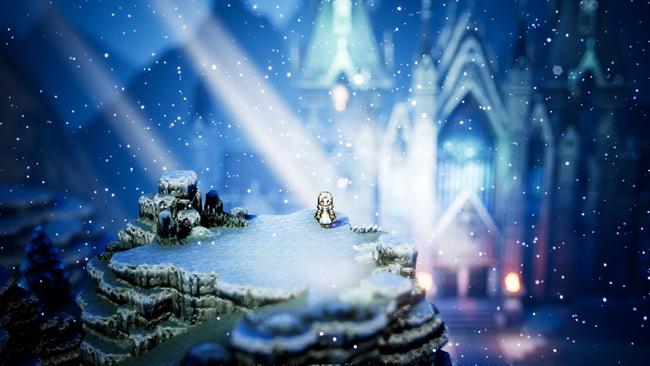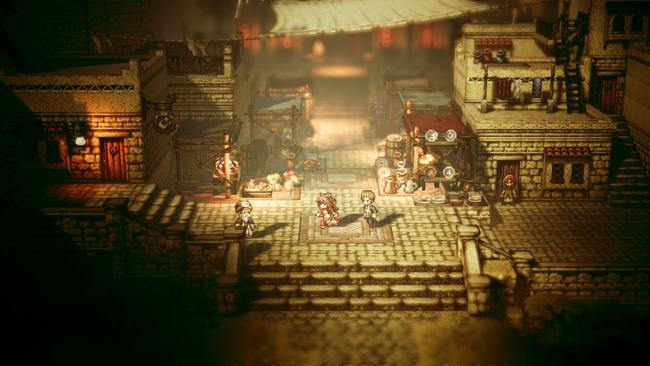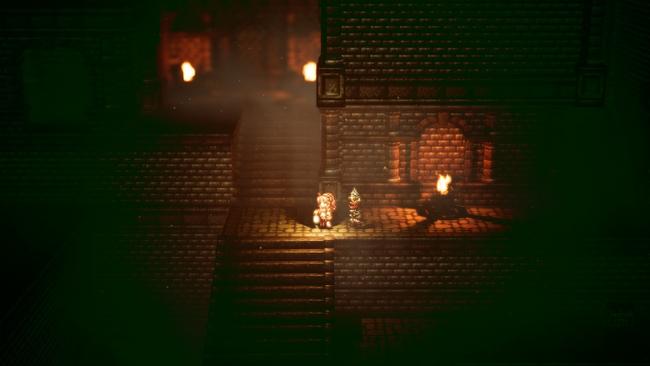
Octopath Traveler PC Review
I'm a sucker for fantasy stories stuffed with camaraderie among would-be heroes. Where characters are initially distant, but insurmountable odds force them to lean on each other. Like in Return of the King, when Gimli looks over a sea of blood-caked swords and the snapping jaws of orcs. He's despondent because this might be his end, but if it is, Legolas reminds him that he's not facing the final curtain alone.
Sadly, Octopath Traveler isn't that sort of fantasy story. It ditches bonds of fellowship, favoring an approach where each character's story is isolated from the rest of the party. When the game released on the Switch last year, the formula worked for the most part. However, in the translation to PC, the chinks in its narrative-armor are far more pronounced.
There's no new content or changes to the gameplay in this port, so I won't get into the nitty-gritty of all that because we've already done that. If you've played Octopath Traveler on Switch, there's not much here to encourage double-dipping. It's the same game, albeit with some bull polish.
You won't need an Nvidia RTX series GPU to run a year-old port of a Switch game. Even at a resolution of 3440x1440, the framerate never dipped below a solid 60 in the many hours I spent with the game. I tested it on a GTX 980, an RTX 2080, and even my three-year-old Surface that struggles with word processing; yet the performance was always smooth and the presentation crisp.

Although Octopath Traveler supports resolutions of 3440x1440, the game itself still renders at a 16:9 aspect ratio. So if you're rocking an ultrawide monitor, you'll be greeted with the dreaded black bars on the left and right-hand sides of the screen. Given the side-scrolling point of view, a higher aspect ratio could've helped landscapes appear vast and less constrained.
A few more graphical options would've gone a long way with the presentation too. The rendering options include anti-aliasing, post-processing, shadows, textures, effects(whatever that means) and that's it. It's a shame because I detest excessive depth of field effects, and Octopath Traveler likes to slather it over every frame like cream cheese on a bagel. Everything not immediately in the foreground is drenched in a thick layer of depth of field, and there's no way to scale it back correctly. Yes, it's a stylistic choice, but the toggling depth of field on or off is a pretty standard graphical option in PC games.
While it lacks a bit in the system configuration department, it's still a perfectly playable port. If Steam achievements popping as Primrose charms some poor schmuck is what you're after, then this should do the job. However, the translation to PC has hurt Octopath Traveler in ways that graphical sliders or achievement support can't remedy.

I always felt compelled to take a step back while playing Octopath Traveler on PC. To pause after a battle or big story beat, wait for an interlude, expecting something that never actually came. Hours upon hours passed before I was able to articulate why I felt this way, then it hit me: Octopath Traveler was designed for small, bite-sized chunks stretches of gameplay. Having eight disconnected storylines works when you've got to kill 40 minutes on a commute, but it makes for awkward pacing when you're sitting at a desktop for long periods.
Take Primrose's story, for example. It begins with the tragic backstory of her father's murder and how that leads to her becoming an erotic dancer. She struggles to maintain composure under an abusive procurer and to not hyperfocus on revenge for her family. One day, a hooded figure appears in her establishment. Confident that this stranger is involved in the murder, Primrose decides to follow him. She's been waiting her whole life for this moment, for the chance to reclaim her family's name. The voice acting is excellent; the text is delightfully flowery, the music nails the tone, and yet I can never focus on what's happening on screen.
The pacing is always pumping its brakes to its detriment. There'd be a snippet of backstory, then I check twitter. A big battle would conclude, and I'd made dinner. Someone joins the party, and I save and call it a day. Each of these beats is sliced off in 20-40 minute segments, which works wonderfully with an undocked Switch. That stop-and-start nature is perfect on the morning commute, but nobody is lugging around a 20lb desktop on the train (for the love of god, don't do this).

Octopath Traveler's segmented, disconnected narrative is just not meant for extended play sessions, and I suspect the developers would be inclined to agree. Doing so lets you breathe the story deeply, and it ends up smelling like a fart. A startling revelation might cause Primrose to have an emotional moment, but her traveling companions will offer no consolation. The other party members might as well be holding signs that say "I don't give a fuck" in the background.
And why should they care? Ophelia's there for a religious pilgrimage, not to help a dancer find a murderer. These characters seem to travel together out of sheer convenience, not because they're shouldering a collective burden. Why help someone you never acknowledge in a meaningful way? Is it even a party if none of them talk to each other when it matters most? If Octopath Traveler is a collection of disconnected short stories, then why make it a turn-based party RPG? The longer I played, the more questions of this ilk revealed themselves.
Octopath Traveler was a pretty good game on Switch and a mediocre game on PC. It's so clearly tailored for Nintendo's portable system that plunking it anywhere else is just going to exacerbate the flaws that it has. Yes, this port "works" okay, but that doesn't mean it works best here. For all Octopath Traveler's promises of harkening back to JRPGs of yore, it forgets we loved those games because we loved to see their characters share the load.